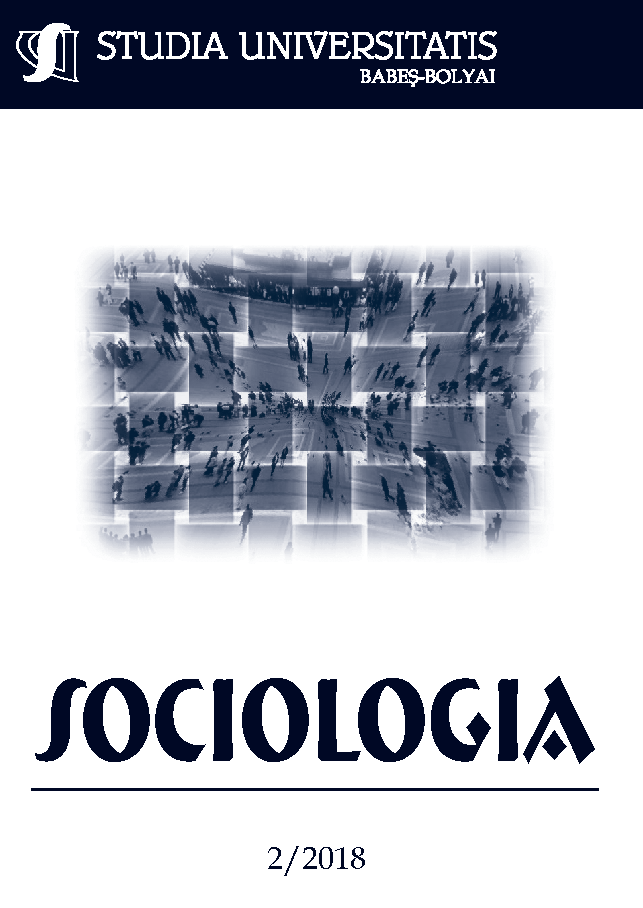HOW I BECAME A ‘ROMANIA EXPERT’
DOI:
https://doi.org/10.2478/subbs-2018-0009Keywords:
planning, urbanization, systematization, area studies, UMass Romanian Research Group, social anthropologyAbstract
This paper, a revised presentation at a panel on academic exchanges at the 2018 Conference of the Society for Romanian Studies, discusses the challenges of researchers studying small, insignificant places, and particularly when our specific knowledge pushes us to become generalists. Since every country has a ‘La noi ca la nimeni’ (‘Nobody has it the way we have it’) discourse, how do we make Romania interesting?References
Berlin, Isaiah. (1953). The hedgehog and the fox: an essay on Tolstoy’s view of history. London: Weidenfekd & Nicolson.
Brubaker Rogers, Margit Feischmidt, Jon Fox, and Liana Grancea. (2006). Nationalist politics and everyday ethnicity in a Transylvanian town. Princeton, N.J.: Princeton University Press.
Buchowski, Michael. 2004. Hierarchies of knowledge in Central-Eastern European anthropology. Anthropology of East Europe Review 22(2): 5–14.
______ (2012) Intricate relations between Western anthropologists and Eastern ethnologists. Focaal Journal of Global and Historical Anthropology 63: 20–38.
Hofer, Tamas. (1968) Anthropologists and native ethnographers in Central European Villages: comparative notes on the professional personality of two disciplines. Current Anthropology 9(4):311-315.
Kideckel, David and Steven Sampson. (1984). Field work in Romania: political, practical and ethical aspects. In Cole, John (Ed.). Economy, Society and Culture in Contemporary Romania. UMASS Anthropology Department Research Report no. 24: 85-102. [available at https://scholarworks.umass.edu/anthro_res_rpt24/30/]
Sampson, Steven. (1983a). Rich families and poor collectives: the second economy in Romania. Bidrag til Östatsforskning (Uppsala), 11(1): 34-43. [available through www.stevensampsontexts.com]
______ (1983b). Is Romania the next Poland? Critique: Journal of Socialist Theory (Glasgow) 16:139-144. [available through www.stevensampsontexts.com]
______ (1983c). Bureaucracy and corruption as anthropological problems: a case study from Romania. Folk (Copenhagen), 25: 63-97. [available through www.stevensampsontexts.com]
______ (1983d). Fii attent. Some anthropological notes on coping with the Romanian secret police. Ms. [available through www.stevensampsontexts.com]
______ (1984a). Muddling through in Romania: Why the mămăliga doesn’t explode. International Journal of Romanian Studies, 3: 165-185 (1981-1983). [available through www.stevensampsontexts.com]
______ (1984b). National integration through socialist planning: an anthropological study of a Romanian new town. Boulder: East European Monographs. [available through www.stevensampsontexts.com]
______ (1984c). Elites and mobilization in Romanian villages. Sociologia Ruralis, 24(1): 30-51. [available through www.stevensampsontexts.com]
______ (1984d). Rumours in socialist Romania. Survey (London), 28: 142-164. [available through www.stevensampsontexts.com]
______ (1986). The informal sector in Eastern Europe. Telos, 66: 44-66. [available through www.stevensampsontexts.com]
______ (1986). Review of Pavel Campeanu, ‘The Origins of Stalinism: From Leninist revolution to Stalinist society’. Telos, 70: 193-201 [available through www.stevensampsontexts.com]
______ (1987). The second economies of the Soviet Union and Eastern Europe. Annals, American Academy of Political and Social Sciences, 493: 120-136. [available through www.stevensampsontexts.com]
______ (1989). Romania: house of cards. Telos, 79: 217-224. [available through www.stevensampsontexts.com]
______ (1994). Dedublarea, diversiunea, și conspirația. Revista 22, 14: 6. [available through www.stevensampsontexts.com]
______ (1996). The social life of projects: importing civil society to Albania. In Hann, C.M. and Dunne, E. (Eds.). Civil Society: Challenging Western Models, 121-142. London: Routledge. [available through www.stevensampsontexts.com]
______ (2019). Tattoos and ankle bracelets: recalling fieldwork in Romania. Ms. Submitted to anthology on fieldwork in Eastern Europe edited by Raluca Mateoc. [available through www.stevensampsontexts.com].
Sampson, Steven and David Kideckel. (1988). Anthropologists going into the cold: research in the age of mutually assured destruction. In Turner, Paul (Ed.). The anthropology of War and peace: perspectives on the nuclear age, 160-173. Granby, MA: Bergin and Garvey.
Simmel, Georg. (1971). The stranger. In Levine, Donald (Ed.). Georg Simmel: On Individuality and Social Forms, 143–50. Chicago: University of Chicago Press.
Wedel, Janine. (1986). The private Poland. New York: Facts on File Press.
Verdery, Katherine. (2018). My life as a spy: investigations in a secret police file. Durham, NC: Duke University Press.
Downloads
Published
How to Cite
Issue
Section
License
Copyright (c) 2018 Studia Universitatis Babeș-Bolyai Sociologia

This work is licensed under a Creative Commons Attribution-NonCommercial-NoDerivatives 4.0 International License.






